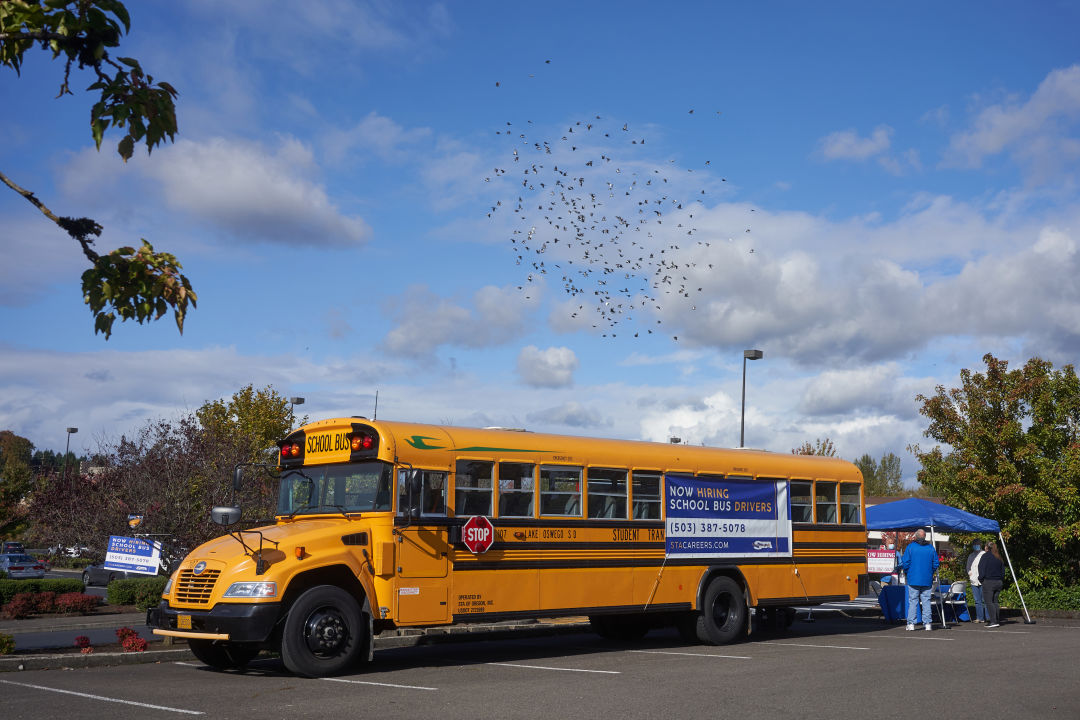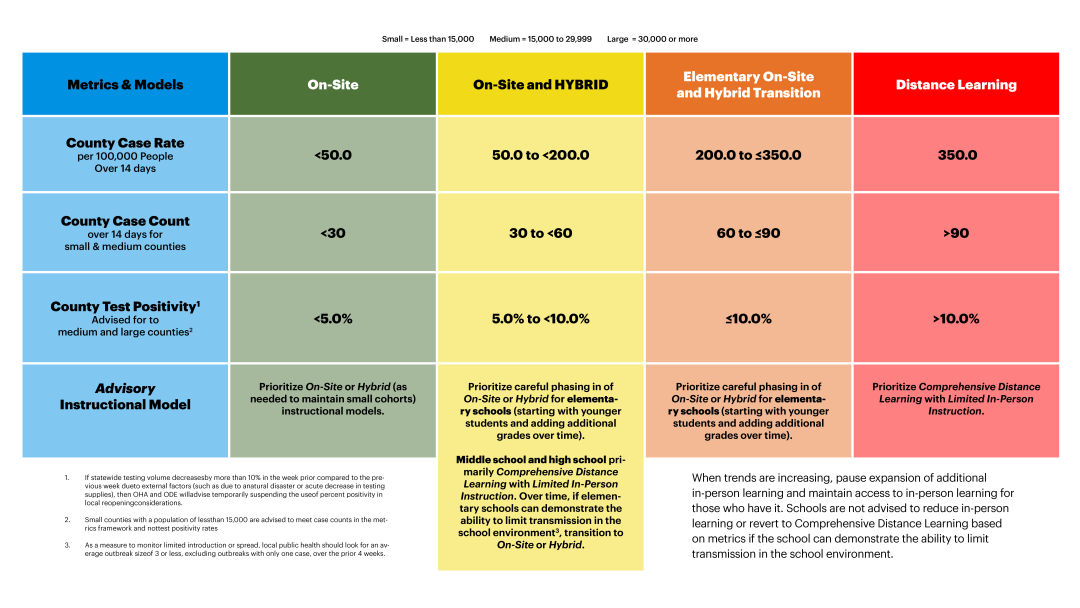The Bar to Reopening Schools in Portland Just Got a Little Bit Lower

A school bus in Tigard, Oregon
Ten months after closing down all of its public schools, Oregon’s state education agency on Monday propped open the door for them to begin reopening, at least for the youngest students.
The change comes after months of extreme caution from the state, even as schools around the country and around the world tested the reopening waters and found that so long as a familiar list of precautions were in place—masks, handwashing, distancing—coronavirus was not spreading rampantly in schools.
The updated guidance also comes as Oregon has its first diagnosed case of a new variant of the coronavirus, which spreads more rapidly and has pushed new case counts in the United Kingdom and elsewhere to new highs.
School districts around Portland have told anxious parents and students that they planned to wait for today’s guidance before announcing further updates on opening plans; look for a wave of announcements from metro area districts in the coming days, though many private schools and a few districts in wealthier suburbs including Lake Oswego and West Linn-Wilsonville, have already announced plans to begin reopening.
The guidelines are advisory, not mandatory, but school districts in the region have used them as a key decision-making data point, as a shield against liability from any future Covid-related lawsuits.
Among the biggest changes in today’s updates from the Oregon Department of Education:
- New, and less stringent, metrics for metro area schools to consider in their reopening plans, which call for opening elementary schools for students to attend in small cohorts so long as cases have been below 350 per 100,000 people over the previous two-week period. Under that standard, elementary schools across Clackamas, Multnomah and Washington Counties would be able to reopen, so long as districts can reach agreement with teacher and educational staff unions.
- Once they’ve opened to in-person learning, schools are advised to continue with it, even if case numbers spike in their county, unless there is significant evidence of an outbreak caused by in-school transmission.
- Metro area middle and high schoolers, under the new advisory metrics, might find themselves still waiting for a return if districts chose to stick with state guidelines, until cases fall further, though numbers have generally decreased in the region since a high in late November. The state suggests that once cases are below 200 per 100,000 people, schools can begin to reopen for older kids, assuming that transmission has been low at the K-5 level.
- A new focus on “outside learning,” the clearest sign to date that the state is looking toward recovering educational ground lost for many students in the spring and, crucially, the summertime. (Any summer education programs will need to bargained with teachers and could be expensive, though the incoming Biden administration has promised additional financial aid for school districts.)

The school reopening debate has gotten heated the longer schools have remained closed, with teachers pushing back against opening, citing health and safety concerns. Parents are also divided, with some pressing for an immediate return, citing mental, physical, and academic needs of kids, while others say they want to wait until teachers feel fully comfortable with a return.
All camps will find things to like—and to criticize— in Tuesday’s updated guidance.
For example, the guidelines keep in place a 35-square foot per person requirement for room capacity; in cities like Portland, where many older buildings have small classrooms, that could mean that no more than 10-12 children would be able to return at once. (Experts with the Harvard School of Public Health have argued that three feet of space per child is plenty in a school setting.)
Months after other states have introduced robust testing programs in public schools—state education officials now say schools should be offering access to Covid tests on campus for students and teachers who show symptoms, as well as those who have been in close contact with them. They've also added language calling for a two-week buffer period for teachers to make the transition to in-person learning after the decision is made to switch over.
The document also suggests how school districts should handle those families who want to keep their kids in virtual learning, which could be via, “360-degree video cameras, or video cameras on tripods in classrooms to allow student interaction and collaboration,” a strategy that has been in use in Baltimore, Md., for months.
And Tuesday’s guidelines put some teeth into the state’s masking requirement for schools, stating that students or families who refuse to wear masks for “values-based reasons” (as opposed to medical concerns) will have to go back to virtual learning.
Even with Tuesday’s updates, there is still plenty of uncertainty ahead for schools, teachers, educational staff, parents and kids. Teachers in Oregon are set to begin getting their vaccines on January 25, ahead even of those ages 80+, thanks to a decision by Gov. Kate Brown, but the vaccine roll-out process has been slow, and teachers say they are concerned that they—and their students—could still bring home the virus to pass to unvaccinated family members.
And school districts nationally are struggling with finding enough teachers and substitutes to fill staffing needs, as well as with the back-and-forth of periodic schoolwide quarantines if a student or staff member comes down with the virus. Bargaining with teacher unions over working conditions in the pandemic has also been a sticking point; in Chicago, for example, teachers that have refused to return to the classroom have been locked out of their computers and docked pay.
LISTEN: Portland Monthly news editor Julia Silverman breaks down what the new "Ready Schools, Safe Learners" guidelines mean for Oregon’s school reopening efforts in this episode of Footnotes.




